
December 28, 2014
 Everything I Still Remember About CAB 2014 And ICAF 2014
Everything I Still Remember About CAB 2014 And ICAF 2014

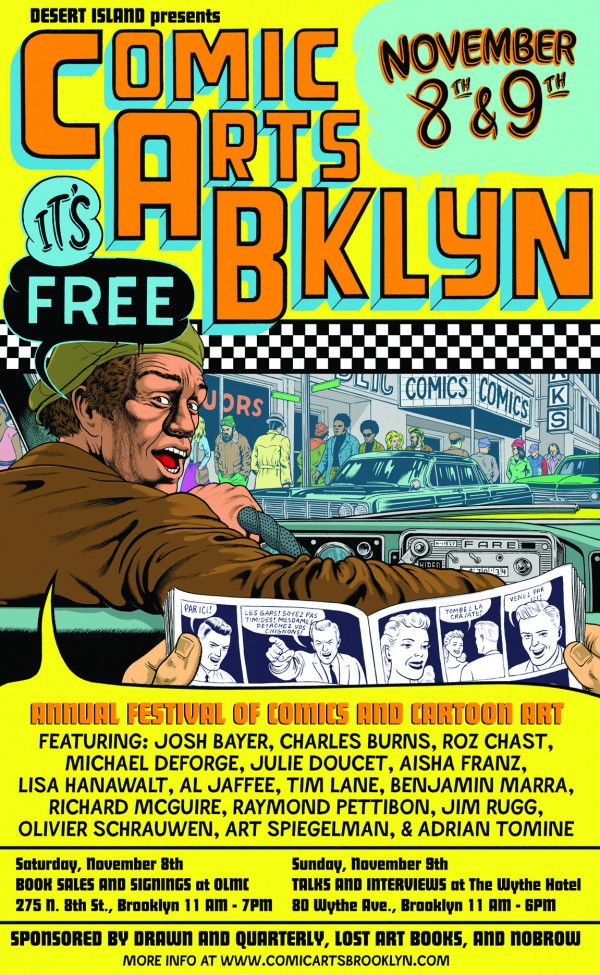
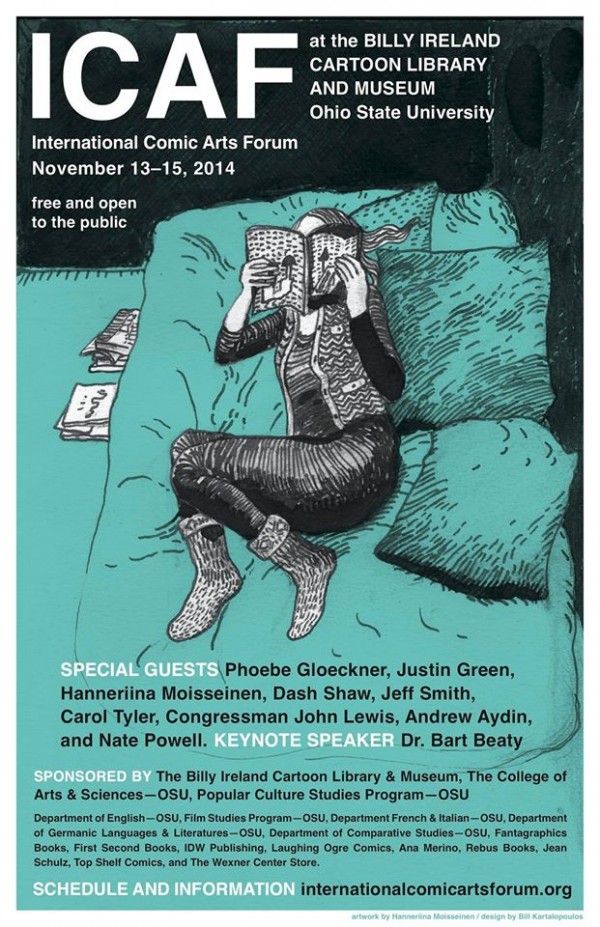
*****
These are my notes and observations from the weekend of
Comic Arts Brooklyn (CAB) 2014 and the
International Comic Arts Forum (ICAF) 2014. They are very late.
A couple of months before attending this show I accepted a position as Festival Director of
Cartoon Crossroads Columbus, a show starting in 2016 with a launch event in 2015. Please read the following in the light of that knowledge, and come to whatever conclusion you like.
*****
* I did two of our best shows, Comic Arts Brooklyn and the International Comic Arts Forum, on back to back weekends in early November. It's the only such two-fer I've ever done for comics shows, or at least the only one I can remember. It might be that I've gone back to back during that ridiculous early April cluster of past years; I couldn't say. This was a really fun trip, though, with deep and meaningful contrasts. I think presenting them together will be fun. I also didn't take a significant number of photos at either one -- I just sort of gave up on this -- so the nature of this report will be much different for not having photos and captions to carry the last 1500-2000 words.
* as far as my own personal travel odyssey goes, if the SPX show marked the first one this year in which I started bone tired and stayed this way, this was the first one where I actually misjudged when my meetings were going to be and had to buy a supplementary ticket and just east the cost of one of the previously-planned travel segments.
* I took the overnight from Alburquerque to JFK (it's since been cut back), which means driving five hours as opposed to the three I drive to El Paso (most points east) or Tucson (most points west). I was actually glad to do the Alburquerque trip one more time because it meant driving on
Highway 152, which is the beautiful mid-state highway that cuts right across a small bunch of mountains in terrifying switchback fashion for about 45 miles. So beautiful. So, so, so beautiful. My brother e-mailed me the first day I was in New York to say that I shouldn't have been driving on the road at all because it wasn't open until the day
after I took it. It had been closed for recent flood. In fact, the highway became a dirt road about 20 times where mud had tumbled onto the highway itself. I was lucky to make it to the airport on time and was glad to let that beautiful stretch of country settle into my eyeballs one last time.
* so just like SPX, I rolled off the Jet Blue red-eye and into CAB week tired and exhausted. I worked on the site at the airport a bit and on my way to the city stopped and had coffee with the cartoonist, photographer and occasional essayist
Julia Wertz. I like Julia very much but I don't know her all that well. Therefore I'm very, very grateful she did that. I'm grateful in general when people in towns where conventions are take on that kind of extra social responsibility, although hopefully Julia wouldn't conceive of it like that. That's got to be a weird thing people showing up in your hometown a few days before and a few days after some random show springs from the soil. Anyway, we talked about comics stuff, including SPX. We had overlapping but not identical concerns. She
has a new book she repped back at SPX and at CAB that next Saturday, and she's doing new work on-line. I'm happy that among her many continuing interests is making comics.
* we also gossiped a bit. About you, mostly.
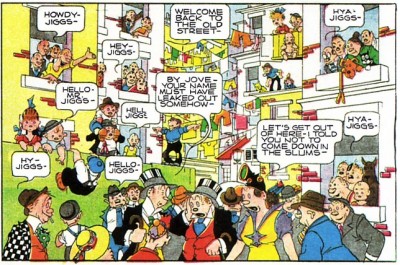
* I don't know if there are any good travel tips for New York. You should spend a decade or so making yourself super-rich before you travel there, and even then you should still see if someone is willing to put you up in their home before you look into checking into a hotel. I'm at the age where I'll stay in the scariest dive except for the guest rooms about seven people in the world whom I love and trust. My two nearby pals that qualify, one lives in New Jersey and the other by considered family decision no longer take house guests of any kind. I've had good luck in New York with
the Empire Hotel Group in terms of hotels that are routinely cheap (in NYC that means "less than $200 a night") and that satisfy my not-exactly-stringent hotel requirements (reasonably quiet, reasonably competent and nice staff, reasonably comfortable, and a not-scary neighborhood). The one that's worked the best for me on a few trips is
The Hotel Newton, which is way up by
Columbia University but right by a major, easy-to-access subway station. Plus there is a bunch of stuff to eat up there, and it's a generally okay-to-nice neighborhood. Your mileage may vary to a significant degree.
* another couple of travel tips that pop to mind right this instant are extremely basic. One is I do the European thing where I take a business card at the front desk of the hotel in case I got out until 4 AM and am not quite myself and need a cab ride back to where I'm sleeping. Another sounds like I'm Gomer Pyle, but I'm at an age where this stuff works. I scout likely major subway rides and take a single sheet of paper where you put in sentence form what you'll be doing: "take the ____ train towards _____ getting off in _______ stops at ______."
* I know, I know, but it works for me.
* one tip I usually use for New York that I totally ignored this time is to make exactly one morning plan, one afternoon plan, one evening plan. I think that's a good way to make sure you have time to do things and also keeps you from getting to stressed out. The reason I ignored it for the most part is I did even fewer things on this trip to NYC than any I've ever done. For instance, I actually
caught up on sleep while I was there, collapsing for 17 hours of sleep with a 90-minute dinner breaking things up between hour eight or nine. I did miss a lot of CAB satellite events because of this schedule choice, which I regret. The satellite events are a big part of the nature of that show; I can say that having attending in past year, talking to people about their overall weekend and eventually getting to a couple such events Friday. And I missed out on seeing friends, which I regret even more. But I kept my sanity. Long year.
* you should never, ever do this, though, and if nothing else on every single trip to New York you should visit that city's great comics retailing backbone because any one of the city's top dozen stores i likely to have works you're not going to see anywhere else.
* one day I left my room to walk around and ran into
Connie Sun, going out to lunch with a work colleague. Everybody likes Connie Sun.
* I did get to have a couple of drinks with
Anne Ishii, who appeared at the
Fantagraphics table during CAB a few days later in support of the book she produced with
Chip Kidd and
Graham Kolbeins:
Massive. We talked about the why of art, about how the community of artists represented by
Massive pursues its art with very little hope for remuneration or even a place in that country's comics culture. I hope she's afforded the opportunity to put together any other comics she might want to do.
* it is sort of odd how New York City and Las Vegas can be two of the best cities in which to be alone for a half-day here and there, despite offering up a constant stream of people seemingly up in your business. I needed such a week and was extremely grateful for it.
* had dinner and drinks with a small group of CAB-exhibiting comics-makers, where we talked about everything except comics.
Sean Collins was there and took a photo I can't find now that made me look like
Lou Grant, all white button down and wrinkles and rolled shoulders.
* I'm older than
Mary Tyler Moore Show era Lou Grant now. Don't ever get in the habit of comparing your age to the age of adult characters on shows you watched as a kid.
* moved over Brooklyn due to the unavailability of a room at the Newton straight through. There's probably something to be said for getting over to Brooklyn for the days of the show proper, and I will probably even consider the fancy hotel where the panels are when I attend CAB in future years. For what it's worth I've most frequently stayed at
The Condor Hotel when I'm in Brooklyn. Since that was also full-up, time stayed
at this Best Western, which was more than fine and made for easy travel to different parts of the city.
* had lunch with Meghan Turbitt on Friday before CAB. She teaches comics in addition to making them. Turbitt told me that she had her students working on the production end of her CAB mini-comic, and I'm completely uncertain if she was kidding or not.
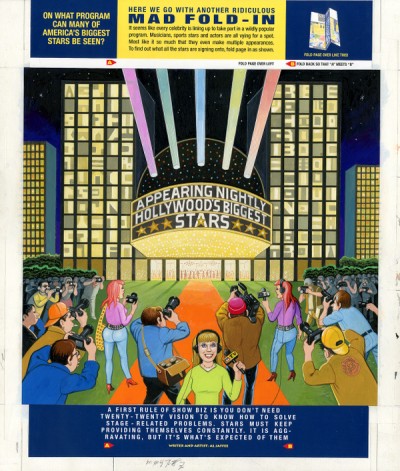
* I took a look at the satellite events going on that evenign and decided I should go out -- the way that Brooklyn is able to accommodate a bunch of different comics-related things will have a significant impact on how CAB is perceived moving forward. I decided I wanted to see the
Al Jaffee art hanging over at Scott Eder Gallery. I ran into
Marc Arsenault and
Sam Henderson on the subway -- two same-age peers I've known in some friendly comics-context since 1995 or so. My father was actually friends with Henderson's grandparents, and one of the things that we gave away to a family friend when Dad passed away was some a homey, wooden, happy-house greeting that Sam's grandparents had gifted him at some point.
* my last time to Scott Eder was the Jack Davis show, and it seemed like there was a 40 percent gentrification upgrade in that section of
Dumbo just in those two years. Just amazing. There was some sort of event going on, and it took us about nine minutes to simply get off of the subway. Never had that happen before.
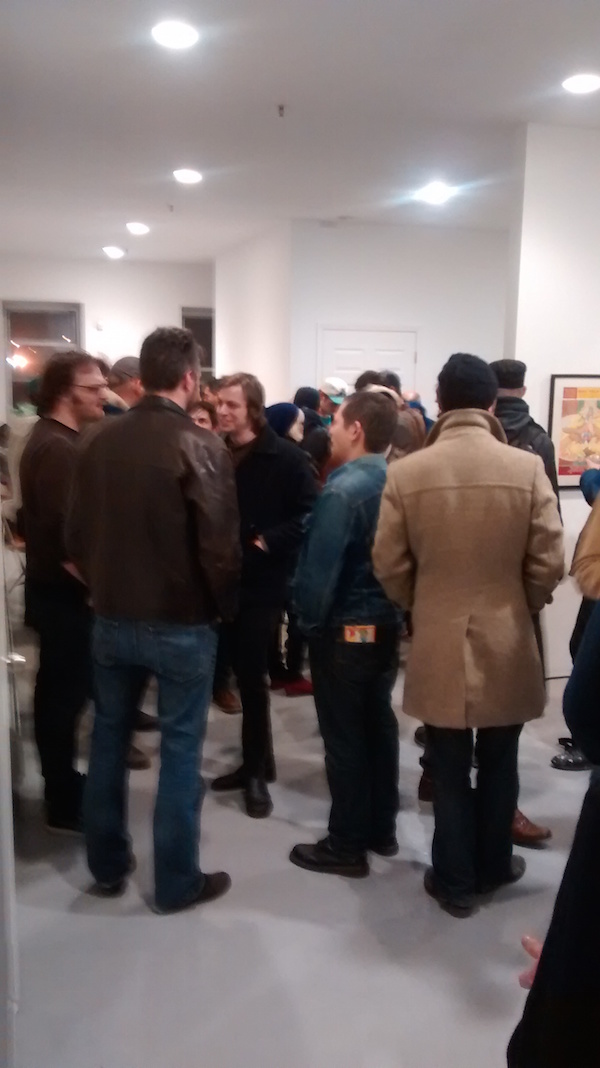
* I liked the Jaffee show. It was almost all newer art, but it was very well presented and Jaffee's career is interesting in its entirety. That was a nice crowd -- as was the case with the Davis show I basically knew no one. I gifted the gallery my knit hat. Outside I ran into Chris Pitzer, Jim Rugg and Paul Karasik. Karasik was on an extended look-at-art jaunt that was continuing with the Jaffee, while publisher Pitzer and artist Rugg were on the major portion of their night out.
* I left when the departure of Henderson and Arsenault gave me an excuse to let the incoming cartoonists work their way upstairs and away from my chatty ass. As the subway was now closed, I convinced the guys to walk a couple of blocks and catch a cab rather than line-up outside the station. We had a C+ time finding a cab. Then it got a little weird. We decided to go to the Hic and Hoc party at a Brooklyn neighborhood drinking establishment. We noticed about five minutes into the trip that the cab driver was stopping in the middle of the road for no particular reason. Like he had fallen asleep. We quickly worked into a pattern where he'd go about 400 yards, slow to a stop, and I would wait about 20 seconds as people drove around us and then I would knock on the window and say, "Hey, buddy! Can we keep going?" And then there would be a pause of about five seconds and he would go again, stopping another 400 yards up the road. After about 30 of these, and several bemused glances between the three of us for the very specific oddity of it all, we got close enough to get the hell out of the car. One of us thought they saw some sort of prayer beads, which could be an alternate explanation. It's funnier for the weird, singular nature of it, though.
* we still tipped, San Diego attendees.
* the party was nice. Very young. I like the Hic and Hoc books collectively, and always wish them well: I think they publish a number of promising cartoonists and they seemd to have carved a unique space or themselves in the context of their alt-/art peers. It was also nice of them to step up and provide a place for people to come and hang out: again, the hosting impulse I was talking about. Heidi MacDonald and I talked about... the James Sturm cartoon, maybe? I've written a bunch about that already, but basically I had a hard time understanding the controversy, which is like my mantra now and like doesn't speak well of how I'm processing the advantages of my perspective. I spent a long time talking to Leon Avellino and Theo Ellsworth, and then a longer time hanging out and talking with Barry Matthews, still understandably a tiny bit wobbly on his feet after a recent surgical episode from which he's been recovering brilliantly. We talked about New Orleans. I had recently visited (my brother's birthday dinner) and Matthews semi-frequently visits. That's an amazing town, and if any crazy rich person out there wants to do a vanity festival or wants to bring back ProCon or whatever, please do it in New Orleans.
* the party was also the first of many occasions I had that weekend to not meet Olivier Schrauwen.
* I walked the three miles (I'm guessing) back to the hotel. Late night. That's a really fascinating way to see a city, if you ever get a chance, how things gentrify in relation to one another, what neighborhoods have some life to them and which ones don't. Conventions can be such a restrictred experience I recommend everyone get out and walk some part of those weekends: Charlotte, for example, is an exceedingly nice city to walk.
* that night is the first place I encountered something which would become a major thing at the show. Many of the people at the Hic and Hoc party thought that the exhibition element of CAB 2014 was going to be two days, Saturday and Sunday. Another group had just figured out this wasn't true. What was reality is that the show in the wider sense had gone two days. The exhibition element was going to take place on Saturday while a new day, Sunday, was added, which would host a full day of panels and programming at a nearby boutique hotel. CAB Red and CAB Blue. What I'm guessing happened is that a lot of people just caught the information that CAB was two days and figured that meant CAB as they knew it -- a big comics show at a church with nearby programming -- was thus going to be happening both of those days. It's an understandable mistake for attendees in particular to make, and while you can make cutting remarks (certainly a lot of folks did) that maybe CAB should have thought that through and communicated that more effectively, there was certainly no one before this well-known, widely discussed show tossing this misperception out as a possiblity. At least not that I remember. I certainly didn't catch it.
* it was definitely a thing. Most exhibitors to whom I spoke thought they lost a portion of the sales to this fact -- citing customers who said they were going to come back tomorrow and buy things. Some people thought the Saturday expo part of the show was lighter than in past years. I would go along with that -- it certainly didn't get to the "oh my god" crazy periods of years past -- although I'm not sure how things like the show's desire to better space its exhibitors might have an effect there. I don't think it was a difference maker for anyone, even with comics' tight margins. It wasn't for anyone I talked to. My theory is that people freaked out a bit about it because CAB is a really high-functioning show and so this kind of mistake stands out.
* an it
is a high-functioning show. CAB is one of the shows I'll always try to do because it has significant structural advantages and I think their basic formula works. It's great that small press and alt-comics cartoonists have a second devoted show to attend. New York City is a great comics city, maybe the greatest. Although my Mom doesn't know what to think of the beards and hats and thrift-store clothing when she sees photographs, Brooklyn is an affluent, arts-conscious community and CAB tends to be a show where people buy things. There's also a solid home-grown cartooning community there, so there's a lot of depth at the tables no matter which special guests are flown out.
* this is where my memories start to become indistinct. I mostly remember having a really good time, visiting tables and talking to a lengthy list of smart, talent people either making comics or buying them. Sometimes both. I bought a new John Pham
Epoxy. Breakdown Press was busy busy busy. I seem to remember Ben Marra wearing a hat. Lisa Hanawalt had a bunch of original art for sale. I saw at least one former Fantagraphics employee I hadn't seen in 15 years, which was nice. We're all hurtling towards our deaths, of course, but it's still nice. I talked to Dan Nadel for about 20 minutes about his incredible year -- he may end up being the Jimmy Carter of alt-comics publishers -- and his book distribution job, which he likes quite a bit. I was wondering if Nadel was so unpopular that I was getting stinkeye just talking to him, but I worked it out later that I was actually standing where I would be looking right into the women's restroom, so I think people were glaring at me just because I appeared to be a creep. Sorry about that.
* what else...? David Mazzucchelli showed up in disguise, which again, I mostly remember as a hat. Because he was there in full view doing a signing, I had a couple of conversations about one of Chip Kidd's next comics-related projects: another
Peanuts art book but this time working with the original art at the Museum. Jog had the most interesting bag of comics, naturally. Julie Doucet had a consistent line for the entirety of her signing. Or signings, if there was a break I didn't catch. Doucet just being there was the most lauded of all of show director Gabe Fowler's moves for 2014, or at least it was in conversations I had. Doucet was also the only one I saw other cartoonists craning their necks to get a glimpse of. I ran into Robert Boyd, who came all the way up from Texas just to buy comics and hang out. I was happy to see him. We need more alt-comics super-customers.
* I'm not sure there was a book of the show, but a lot of people I spoke to were dying to buy
Arsene Schrauwen. Katie Skelly's
Agent 8 mini-comic sold out despite the cartoonist not being there because of a death in the family. I heard a rumor that the John Hankiewicz book was there, but only a rumor. The Emily Carroll issue of
Frontier was on hand. Mostly there was just a
lot of stuff there of interest, which is a sign of how strong that's show's exhibitor base is. Like there was new work from Anya Davidson and Jonny Negron and Conor Stechschulte and so on and so forth. Drawn and Quarterly even had books from the far-flung future of 2015.
* one thing I heard later on from two different people is that to them CAB felt more male-oriented than past versions. I didn't see that on my own; and in fact my memory of the exhibitors is how many women were working the show as cartoonists by themselves, which doesn't strike me as a significant percentage at most shows.
* I left mid to late afternoon having had a great time, back to New Jersey with my pal Gil Roth. We passed by Tim Hodler who apologized for not being around to talk because of a potty break. I'm pretty sure he meant the kid.
* it's a great show and I want to go to it for the next ten years. I love New York. It's our most interesting city when it's toughest for the people I know to live there.
* I was unable to hit day two, the panels and presentation day. They were announced after I had made plans to leave the city. I sent the aforementioned Robert Boyd in my stead. Okay, actually he was already going and I begged him to write something in exchange for the site making a charitable donation somewhere. Boyd's an excellent writer about all kinds of art, including comics. He worked for a range of comics companies (Fantagraphics, Dark Horse, Roger Corman's Cosmic Comics, Kitchen Sink, CrossGen, ADV) before finally moving over to the business world. I was eager to read what he had to say.
******
Comic Arts Brooklyn Day 2 Report
By Robert Boyd
On Sunday, Comic Arts Brooklyn closed down the dealers' room and was all about artists panels. The panels were in a basement meeting room of the Wythe Hotel. Attendance was strictly controlled by a system of advance reservations. With stadium-style seating, it was an excellent space to hear speakers and see their slides. Paul Karasik was the master of ceremonies, introducing each panel. I missed the first two panels, Al Jaffee and Charles Burns, due to a prior engagement (
I was in jail, sort of) and then missed Art Spiegelman in conversation with Roz Chast because I broke for lunch. I'm just not the untiring long distance comic convention sled dog I used to be. So with apologies for having nothing for three of seven panels, here are my impressions of the panels at Comic Arts Brooklyn.

NEO NOIR
The first panel, Neo Noir, featured Ben Marra (
Night Business), Jim Rugg (
Street Angel) and Tim Lane (
The Lonesome Go).
Karen Green from Columbia University moderated, and she asked each of the panelists to provide her with four images that spoke to their own noir influences. First they each spoke to what noir meant to them; Marra defined it as an emotional response to reality, in which a condition of hopelessness or despair could lead to a kind of freedom. Marra's noir touchstones were the movies
Detour,
Kiss Me Deadly and
Touch of Evil, but he brought it back to comics by specifically mentioning the influence of Jim Steranko -- while showing a shadowy Nick Fury page.
Rugg started his slides with the great panel from the end of the first part of
David Boring by Daniel Clowes, where the reader sees from David Boring's point of view a bullet heading straight for him, shot by a shadowy figure in the fog. Rugg related to the satirical elements that Clowes brought to
noir. Next he showed a panel from Frank Miller's
Daredevil run showing dark New York roofs, which lead to a discussion of LA.
Noir versus
noir from elsewhere. Rugg's next image, showing book covers of novels by Chester Himes, Charles Willeford and Jim Thompson spoke to that, at least as far as the very place-centered stories of Himes and Willeford go. He closed it out with
Taxi Driver, where he spoke of the combination of harsh artificial light and constant rain on the look of the classic '70s thriller.
Lane deviated from Karen Green's request and threw up a collage of influences from every genre -- Paul Newman, Bob Dylan, Ernest Hemingway, Jim Thompson, Bruce Springsteen, Walt Whitman, etc. Subsequent slides showed photos by Robert Frank, a boxing painting by George Bellows and some E.C. Crime comics. His influences pointed him in the direction of what he described as grandiose, epic and operatic American stories.

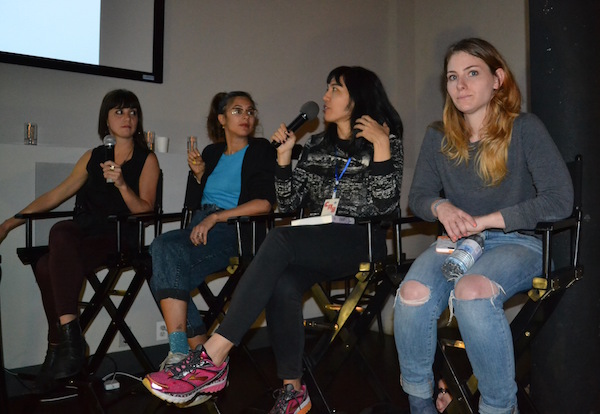
CUTTING EDGES
New York Times Op-Ed art director
Alexandra Zsigmond was the moderator on this panel with three cartoonists, Aisha Franz (
Earthling), Lisa Hanawalt (
My Dumb Dirty Eyes), and Jillian Tamaki (
This One Summer). What struck me about each of these artists was that they were quite successful outside of comics. For them, the difficulty was finding time to do comics. This was especially true for Lisa Hanawalt, whose work as the designer for the Netflix animated series
Bojack Horseman is a full-time job for her. Her comics work can only be done on weekends. It was slightly ironic that Zsigmond was the moderator, because she is one of the art directors who hands out paying gigs that prevent artists from working on their relatively unremunerative comics. For talented artists -- and all of these artists are excellent -- comics pays the least.
Franz is a German artist who, based on what was said here, seems to occupy a similar space in Germany and Tamaki and Hanawalt do in the U.S. She loves to do comics, but paying illustration gigs also occupy a lot of her time. She portrayed this as a struggle between two poles of expression. Her favorite thing, she said, was to work in comics anthologies because those stories were where she had the greatest possible freedom -- but the price is that she does that work for free.
Tamaki spoke of the problem of illustration as being that it reduces you to one thing. Once art directors get used to you doing that one thing, it's the only thing they call you for. You had to force them to look at your other work and styles. For each of the artists, comics represented freedom, even when the work was collaborative (Tamaki's work with her cousin, playwright Mariko Tamaki, for example, and Aisha's work with a theatrical company adapting plays into comics). What struck me is that economically, none of these artists needs comics. They do comics out of a love for the work. (Even if the work can attract the attention of some very strange fans -- Hanawalt's anthropomorphic reptile people have apparently become subjects in slash fiction by "
scaleys".)

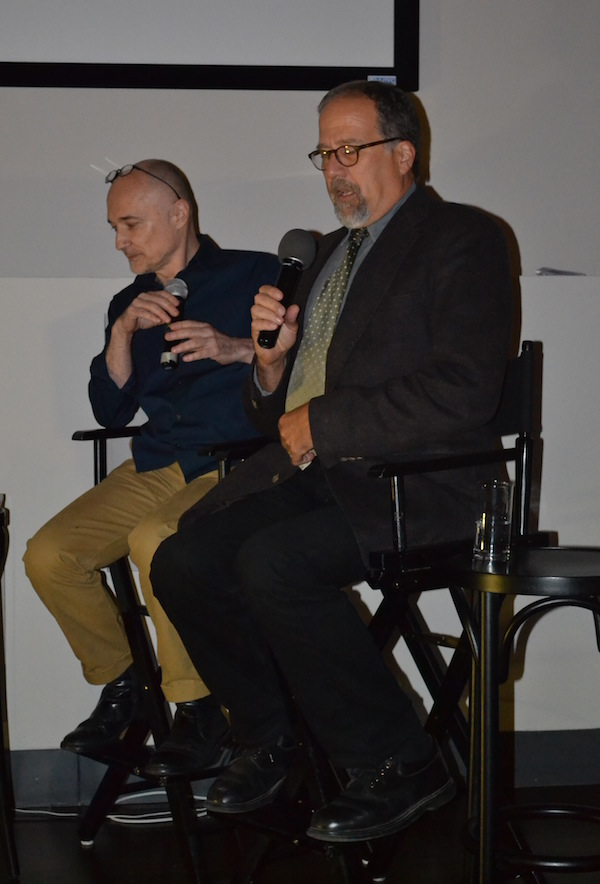
HERE AND NOW
In 1989, Richard McGuire published a short black and white story in
Raw called "Here." Twenty-five years later,
Here is now appearing as a full-length book and an interactive ebook. Paul Karasik was the moderator. Karasik originally commissioned "Here" for the anthology he and Mark Newgarden co-edited,
Bad News. McGuire related how a lecture by Art Spiegelman provided the initial kernel for "Here," and that was followed by the assignments in Newgarden and Karasik's experimental comics class at the School of Visual Arts. Around that time, McGuire saw his first Windows computer, which made him think about overlapping panels. Thus "Here" was born, a comics story where the viewer is fixed in space but not in time, and overlapping panels depicting the same point of view show the past, present and future. It was scheduled for
Bad News, but once Spiegelman saw it, he knew he wanted it for
Raw.
"Here" is widely considered a masterpiece and has been highly influential. The original version of "Here" was black and white, drawn in a deadpan, generic style in order to provide clarity for the reader. But with the new expanded version of
Here, where the reader will have some leisure to get into the flow of the work, he has allowed his style to vary depending on what is being depicted. The book is in color, and many of the colors are inspired by the way that old photos fade.
The location of
Here is McGuire's childhood home in Perth Amboy, although he has tried to make it generic. Still, he mines his own family history for images (as well as old photos he has found). For most of the book, the viewer will see the corner of a room with a fireplace. Some images predate the building of the house (and some predate the evolution of humanity), and some show a flooded future.
The ebook version will not be a mere duplicate of the paper book. Readers will be able to flip through sequences that are joined in time without turning the virtual page. In some panels, there will be small movements -- not the kind of animation that depicts an event, but the kind of movement that evokes memory. McGuire used the example of lace curtains that billow whenever the thermostat kicks on.
Art Spiegelman was in the audience and when McGuire demonstrated this limited use of movement, he declared, "There actually is a future on the other side of paper." As an old fuddy-duddy who clings to paper publications, that struck me as a frank admission. I know I'll be getting both the paper and electronic versions of
Here.
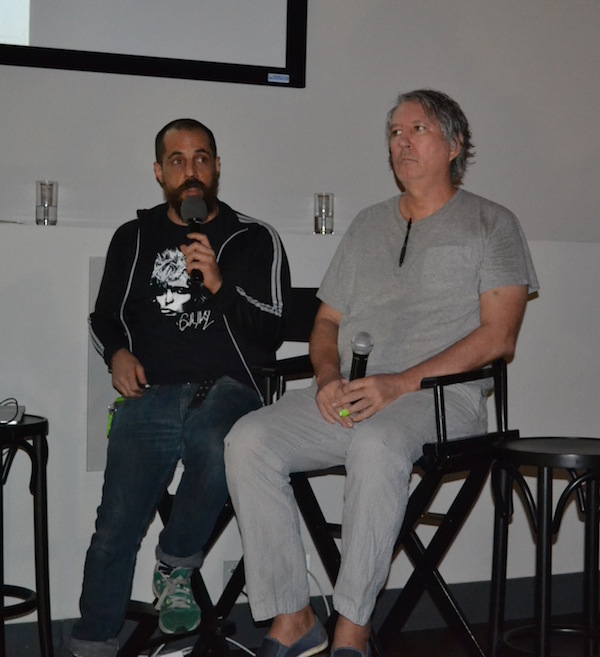

HIGH AND LOW
The strangest panel was Josh Bayer talking art and comics with contemporary artist Raymond Pettibon. Pettibon got his start drawing flyers and album covers for his brother Greg Ginn's record label SST. He had no art education (he studied economics at UCLA), but he parlayed his youthful punk drawings into a career as a blue-chip artist whose drawings regularly sell for six figures. His work, which combines vigorous chiaroscuro ink drawings with words, has a formal relationship to comics without being comics.
He showed us some early comics he did, but then said he left comics and cartoonists behind. "I'm making more money than they are so they can suck on this." This set the tone for the talk to come, in which Pettibon was profane, rambling, unfocused and sometimes incoherent, with occasional revelatory moments shining through. I kept wondering if he was drunk. Bayer was less a moderator than a wild-bull rider, trying and mostly failing to steer the conversation in a particular direction.
Given this, I think it's best to let the maestro speak for himself:
"I'm the only motherfucker in the world who uses a dip pen." (Maybe the only one in the art world, but the audience for his talk was full of cartoonists who still use them.)
Pettibon came from LA but now lives in New York. "In LA, I did a drive-by just to clear my fucking head in the morning."
"One drawing can also have its own narrative, its past, present and future embedded in it." This says something that I've long believed about comics -- that panel-to-panel storytelling is not the only way to depict narrative time. Comics and visual art in general prior to the invention of cinema often employed different means for this.
On not doing commissions: "My own work is freely expressed without some motherfucker looking over my shoulder."
He spoke of cartoonists who influenced his drawing. He praised Mike Kaluta's early
Shadow comics, where one could see Kaluta learning as he went, which is something he admired. For him, that struggle to improve was the opposite of hackwork. He praised Milton Caniff, but declared that he liked Frank Robbins better. The name seemed to draw a blank from the mostly 20-something crowd. He saw that people weren't responding to the name and asked, "Frank Robbins drew
Detective Comics, right?" I spoke up from the audience and said yes, he did, as well as drawing
Johnny Hazard. Pettibon praised Robbins' pulpy brush style, and once can certainly see the influence. He also name-checked J.M.W. Turner, John Constable, Goya, William Blake, Honoré Daumier and Reginald Marsh as influences.
He ended his talk with a live drawing demonstration. I had to cut out before he finished -- prior engagements. Pettibon is one of my favorite artists, and while I wish he had been completely lucid and clear (like Richard McGuire was), his shambolic presentation was in the end perfectly Pettibonish.
*****
* I'm so happy that Robert was able to write up those panels, and urge all of you to follow
his Houston arts blog, perhaps starting with
his recent post on favorite 2014 comics. Thanks, Robert.
* the Chast/Spiegelman presentation during which Boyd opted for lunch was well-liked by those who chose to contact this site. That's two of comics' all-time talkers, so I can't imagine any cirumstance how that one might be a dog. I heard that they had significant attendance, so that's something that seems as if it will continue in that rough form in the future, likely with a bit more run-up to the show in terms of that split nature.
* so that was CAB. I thought Gabe Fowler did a nice job with a show in a kind of necessary period of transition, tweaking the formula a bit and trying to make it someting slightly more than a large flea market. The date thing was what it was; hardly a show-killer and something that we should all remembe when putting together our posters and show information. Making a show that's not just people selling things will always be difficult for shows that have as some element of what they do in that for many in attendance, and nearly all of the pros, there's a bottom-line make-or-break way of judging the success of a festival. As much as we pay lip service to other factors, and as much as they make a good show great, that's the part that has to work to keep most shows viable. So I think the first year a show makes a change in the way they're doing something, it's important that we cut them a tiny bit of slack in terms of their finding a new level with the new version of the show put in place. The only thing that might worry me about CAB is the strength of the convention aspect of it, that the one-day expo remains a place where people want to go and spend some money. Now that they're in November rather than the early December used by predecessor BCGF, that's a really quick turnaround for cartoonists that first got something completed for SPX six or seven weeks earlier. I like the model as it exists right now, though, and hope that it's refined next year rather than abandoned.
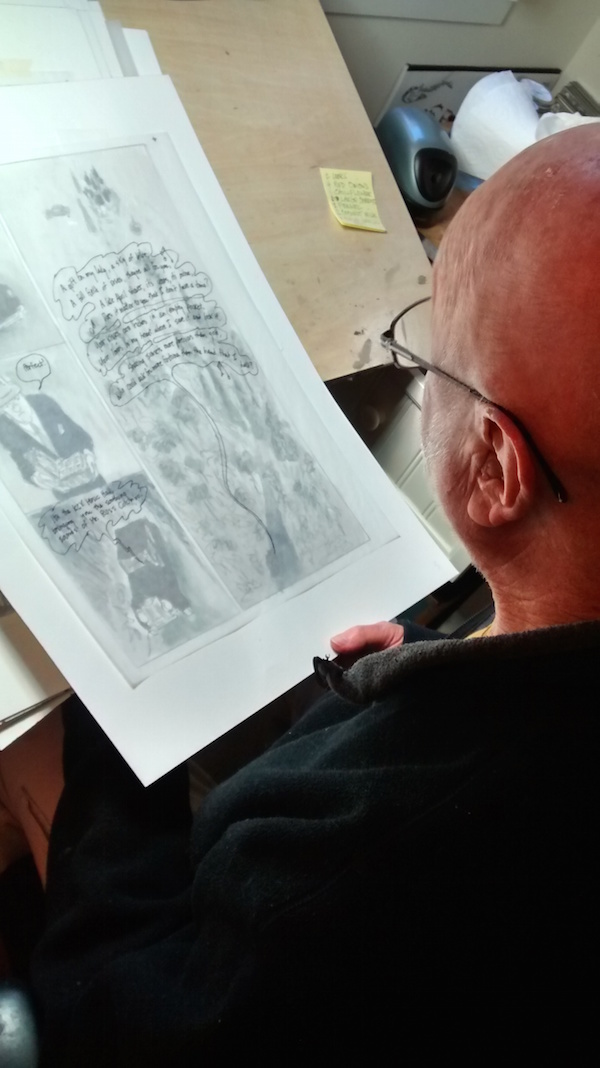
* Monday I had the chance to accompany
Gil Roth as he went out to Long Island to interview Jules Feiffer. That was a treat. Feiffer famouly became a full-time resident out there after selling his NYC residence. His house was open and airy, like a summer home sturdy enough for year-round living. It feels surrounded by nature although neighbors are reasonably close. He had a smattering of comics sitting around such as
Asterios Polyp next to a reading chair. After Gil's interview I got to ask him a few dopey questions about
Sick, Sick, Sick (a longtime obsession of mine) and he told a very sweet story about Robin Williams calling his daughter as a make-up for Feiffer forgetting his kid wanted to be around when they interviewed for
Civilization. He was also very laudatory when it came to the late actor Philip Seymour Hoffman. That was just a great visit for me; Feiffer is a big-time cartooning and playwriting idol and I can't believe I got a chance to look at his drawing table.
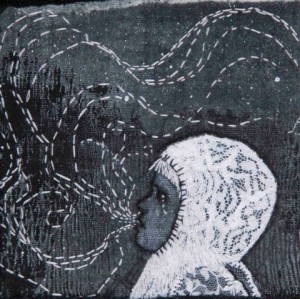
* thanks to a short flight at a ridiculously early hour, I got to Columbus a couple of days early for meetings related to CXC. They went very well. Bill Kartalopoulos sat in on one of the meetings and was extremely nice and helpful. He was in town for ICAF to coordinate and host a Hanneriina Moisseinen presentation and appearance, as well as assist/run the outside programming more generally. Watching him sweat through a travel delay for Moisseinen was really interesting to me in terms of just how seriously he -- representing a lot of comics people -- takes these assignments and responsibilities in a way that doesn't always match up to comics' history of being lacksadaisical and laid-back to a fault.
* ICAF is a meeting of comics scholars that floats between campuses and is currently being held every 18 months. It provides a chance for comics scholars to present papers to their peers, receive feedback, attend programming designed for them combining local, national and international guests of interest, and generally interact with one another.
* the bulk of the show this year was mostly in the Ohio State student union just south of the Billy Ireland, with plenty of meetings and events and general hanging out done at the Museum when appropriate. I know they ran some backstage tours for scholars and visiting guests all weekend, and the people that took advantage were rightly wowed. The student union was nice and I have never been called sir so many times per hour in my entire life.
* I had a great time at the event, which I hadn't attended since 1997 or 1998 or so. I was asked to be at the show to moderate a short talk with Columbus comics resident and international cartooning heavy-hitter Jeff Smith, which is not the demanding assignment you'd think it might be considering how many times we've talked and Smith's willingness to talk about whatever I want. So for me it was mostly just sitting back and taking in the event as a visitor. I know enough people from that world that I feel comfortable visiting it, and met maybe a dozen more that weekend. These are all super-smart people whose job is in part digging into comics and the presenting what they've learned to their students and the wider academic community. What's not to enjoy? I wrote about this during the special conference that opened up the Billy Ireland museum last year, but I have so much fun just treating ICAF and similar shows as idea factories where I just stand there staring at the conveyor belt and getting five to six things I've never thought of per hour. It has a different tone and pace to it than a regular comics show, mostly because the commerce aspect is all but neutralized and isn't in your face at all times. It's not for everyone, but if one comes near you might try to attend some of it. My understanding is that most of the programming is made free by the hosting universities; that was at least the case this year, and I saw some Columbus regulars in attendance like
James Moore,
Christian Hoffer and
Tom Williams.

* I was particularly touched at this year's show how much some of my same-age peers, particularly
Bart Beaty and
Charles Hatfield, who wrote for
TCJ when I was there, are big players in that world. Bart Beaty gave the keynote, and it was this semi-confrontational speech encouraging scholars to get outside their academic and administrative comfort zones so that more could be accomplished on behalf of that field of study. Bart, who just finished a book on
Archie of all things (
Twelve-Cent Archie), far away from his comfort zone of modern European comics, is also a former department head at his school, I'm told the first comics scholar to do so at a general university. He was therefore a very good person to deliever this two-pronged message, and you could hear echoes of its argumentation through the weekend.
* as if taking up the gauntlet Bart threw down (although that would be impossible timing-wise), Charles Hatfield had a first meeting and initial interim-officer voting for
the Comics Studies Society, a group he and the other officers and interested members hope will add to the development of this field of study by providing all the advantages of a professional organization. That was fascinating to stand in the back of the room and watch. The idea of all the comics people in the 40s recognizing their likely lifetime commitment to comics and the opportunity to organize and trying things and maybe make things better, that's very exciting to me. At any rate, I was happy to see those guys, even though the beer I bought them later on was in the worst bar in the world.
* I also wanted to be on hand to see how Columbus serves as a home for conventions, an item of professional interest for me now.
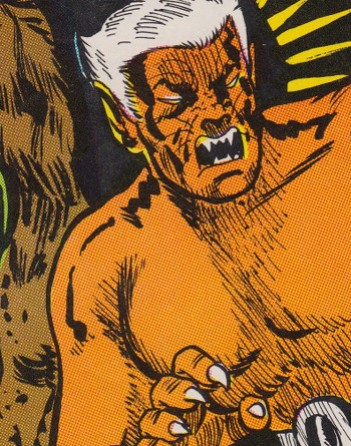
* without cheating by looking, the presentations I remember standing out -- and this is no doubt as much about my taste in comics as it is the quality of each presentation -- were Robert Loss on
The 'Nam, Jeremy Stoll on the culture supporting the making of comics in India, a roundtable about the realities of institutional support for comics (which included the gem that the best way to get people to give you money is to show up with money on your own and make it a request for more money), Brian Cremins on Grass Green (please somebody hire him to do a book), Marc Singer on
Persepolis and Susan Kirtley on elements and flourishes coming out of Lynn Johnston's initial impulse to re-tell the
For Better Or For Worse stories from the beginning after she ended the primary narrative several years ago.
* all of the professional presentations were good, too. Cartoonists and comics people are getting much better at that across the board. I had a great time talking to Jeff and I think that went at least reasonably well. A lot of laughing. Justin Green and Carol Tyler were great; I'd never met Justin Green let alone seen him speak, and I feel about meeting the underground greats the way I used to feel about meeting the all-time top 50 NBA players. Dash Shaw was funny and interesting; he's become a really good presenter of his own material. Phoebe Gloeckner is always wonderful; she's always very engaged with her material. She talked in straight-forward fashion about her struggle with making art about the situation in Juarez that's presented itself to her. There was a work she showed on screen where she recontextualized all these shots of dead people that she had as "people sleeping" that was a gut punch.
* the best moment for a lot of us there to see it came during the Hanneriina Moisseinen presentation of the documentary
Laulu at the Schulz Auditorium at one of the night events. She had already presented her comics in a more traditional sense, but she was there with the documentary as well. The documentary is about her seeking out training in a specific tradition of nearly-gone folk singing, and her relationship with a surviving master. I thought it was good. During the Q&Q afterwards, Phoebe Gloeckner requested -- I still don't know if they had planned this in advance or not, I've been told both things -- that Moisseinen sing. She sang a song
a capella. That was quite remarkable. The room was slightly in awe; most people had their eyes closed.
* I learned someting new about Jeff Smith despite having talked to him and having interviewed him countless times. He said during oour talk that he considers the heart of
Bone, the key series of scenes in the narrative, the resolution of the plotline where Phoney Bone turns the villagers into a paranoid group of dragon-fearful clowns. That this is his choice of central moment really changes the way I look at
Bone, and I didn't think that was possible at this late date. Fascinating.
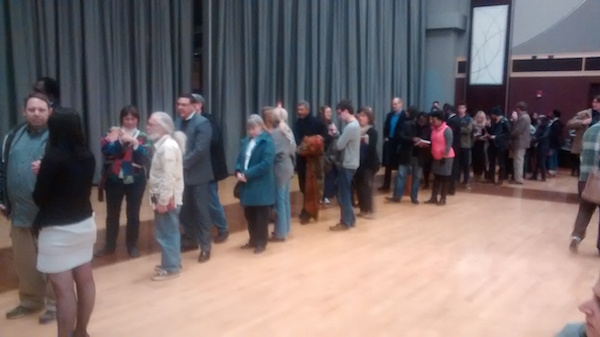
the show ended with a re-scheduled appearance (there were ISIS concerns the first time they tried it) on OSU's campus by Congressman John Lewis, Andrew Aydin and a very sick Nate Powell, all in support of the
March series. Lewis was a forceful presence and Powell was charming, but the surprise was writer Andrew Aydin, who gave a very fiery speech about politics and his hopes for the
March book in potentially helping to restore non-violent activism to a place of honor when it comes to the sort of tool sets that people look to adopt when becoming politically active. That may be the most ambitious, specific mission for any comic ever. That show was extremely well-attended by locals and students, and the line for the signing was the length (see above)
and width of the auditorium. Both Caitlin McGurk and Jenny Robb were on-hand for that part of the show as they had also hosted the Congressman at the library to see their Civil Rights exhibit. The Congressman personally and enthusiastically thanked Bill Kartalopoulos for his the inclusion of
March material in
Best American Comics and Bill was over the moon.

* one of my favorite memories from the entire year in comics was having lunch the first day of ICAF 2014 with Moore, Hoffer and Bruce Chrislip. Bruce came up from Cincinnati where he lives now. I knew Bruce in Seattle, where he was best known for being the first cartoonist to move to the Seattle area and for being the cover model on Peter Bagge's 'zine
I Like Comics. Chrislip is the kind of man who will mention an article about a comics show in Youngstown in 1973 and then pull out a manila folder and present Xeroxes of the article. That's my kind of guy.
* it was freezing cold all weekend, so the thought they're going below the Mason-Dixon line for the next show in Spring 2016 is good news on that front, at least.
* so that was a meaty show, the actual show part of it. Just a lot of ideas to consider, a lot of smart people talking comics and hoping to make a bigger place for comics in what they do. I don't know that I can talk about that's week's social activity without sounding ridiculous. Most of were hosued downtown about a 45 minute walk away from the campus -- I know I and Moisseinen and Don Simpson (oh, yeah, the cartoonist Don Simpson was there, I'll come back to him) walked it one direction or the other, but most people took a bus or cab or caught a ride. We were thus stuck for late-night entertainment in a pretty active part of northern downtown, but one which we didn't know. Because of the rotating nature of the event, ICAF seemed to have a slight problem figuring out who was hosting the part and who was there to enjoy the party, if that makes any sense. It seemed less of a problem as the weekend went on. Without a lot of structure -- and you don't want too much structure at one of these things -- you rediscover that most comics people aren't seize the moment kind of people. That's to their credit, but on a wekeend like that what it means is that sometimes things get left hanging in the air.
* eventually, as in all things comics, the academics found a suitable dive-y bar near the Hampton Inn & Suites. Many went there multiiple nights and enjoyed various giddy, intense conversations about comics and life and careers. Scholars have something in common with artists in that right now the boom in each field hasn't found its way into a whole lot of their pockets, which I think at least in conversation highly sympathetic to issues of exploitation as they still exist in various comics fields.
* I got to ride in a cab with Charles Hatfield one of those nights -- Simpson and another late-arriving academic took our places in Robert Loss' car -- and we talked about 1990s ICAFs, and what a heady experience that was for him at that time. Hatfield was so nice he called the dispatcher for the cab we phoned to get to cancel it once we jumped in another one. That's not something that would even occur to me.

* I thought most people in attendance had a decent, laid-back time. I had a really fun time breaking bread with Dash Shaw for the first time in two full years, for instance, with Jeff Smith and Vijaya Iyer, just off campus. I had a good time throughout. You forget when you go and work at comics shows how much fun it is to go to comics shows, even one as off-beat as ICAF.
* Don Simpson has a PhD now, and seemed taken with elements of the show -- a very different con experience than going to one of the old guard as a professional cartoonist, I figure. I greatly enjoyed talking to him, and that he enjoyed himself at a very different comics show reminded of May and mainstream industry vet Scott Dunbier sighing happily and telling me that he tought TCAF was his favorite show. I hadn't seen Don since we were both on the infamous SDCC "Get Larry Marder" panel after Image went with Diamond and everyone thought that meant that Capital would go under owing enough money to capsize a couple dozen publishers. The good old days. Things turned out okay. It looks like they turned out well for Don Simpson, too. I hope to see Simpson again once I'm settled in the Midwest.
* I only had to e-mail one comics pro after the show due to a drunken promise I made at 1 AM, so my thanks to Jeff Lemire.
* I only lost all of my important papers and computer stuff once, but it was only lost in the front of James Moore's car so I dodged a bullet there. My thanks to him for returning them as opposed to scanning and tweeting the contents of the bag.
* Jeff Smith and I also soft-announced
CXC there, which was interesting primarily for me in what people asked after. I'm really grateful people stopped and talked to me about it the rest of that evening. There will be an academic portion to the four-day version of the show starting in 2016, so we thought it would be nice to let that community be the first to know. We'll get better about talking about our plans in public, and we look forward to 2015 and beyond.
* the last night in Columbus about a dozen of us still standing found a completely different and mostly empty for a Saturday night downtown brewery/restaurant in which to talk nonsense and nurse very cheap beers. By the way, the contrast between going to New York and then to Columbus where for the cost of a beer in the former can net you a round for a whole table at the latter, this was never lost on me. Midwest 4-ever. There's a better world out there with an Eagles Lodge-type bar and meeting place organized around cartoonists. I look forward to making Columbus my new home. Also at one point watching members of our group of comics people gingerly wonder what table they might be allowed to sit, I decided that maybe functioning in a bar should be a programming track at cons or at least taught at CCS.

* Bill Kartalopoulos fell asleep at the table, shaming the rest of us. He left it all on the field. Go Buckeyes.
* so that was ICAF: a blur of fun ideas ("when and under what circumstances does what we know about cartoonists in terms of personal history and gossip become relevant to our study of them?"), significant artistry and community advocacy. I remember great big messy pieces of it, and I can't wait to see by the next one a) how many people take Bart's challenging keynote advice to heart, b) how many ever admit to it. I also have a bunch of reading to do. Everyone should try to attend one. It's classes, but they're fun classes, and the scholars are only a little annoyed at you if you keep falling asleep in the back row.
* I didn't go to sleep that last night. I went back to the hotel at 1:30 AM and watched SportsCenter for an hour before calling a cab. At 3:17 AM, the bus started up in its bay in downtown Columbus. Thanks to the newly resurgent modern miracle that is regional bus transportation, three hours later I was in my hometown, eating an omelette, having walked from the station to two blocks south of the YMCA. I was sitting across the table from a pal I've known since 1979. Comics didn't come up once.
*****
* all art used should be recognizable in context, or I did it wrong. I guess the difficult one to figure out might the
Bringing Up Father panel, which was simply a depiction of New York I've always liked. My thanks to all of my various dining and drinking companion and the generous organizers of these shows.
*****
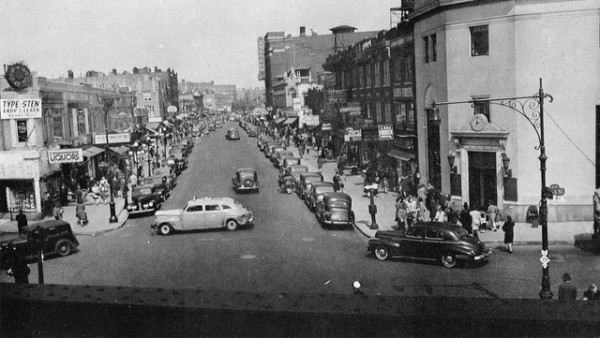
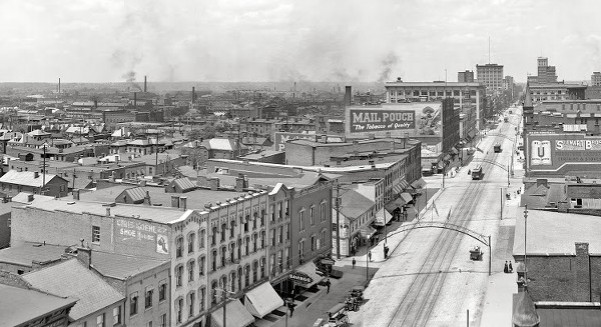
*****
*****
posted 9:00 am PST |
Permalink
Daily Blog Archives
November 2019
October 2019
September 2019
August 2019
July 2019
Full Archives


